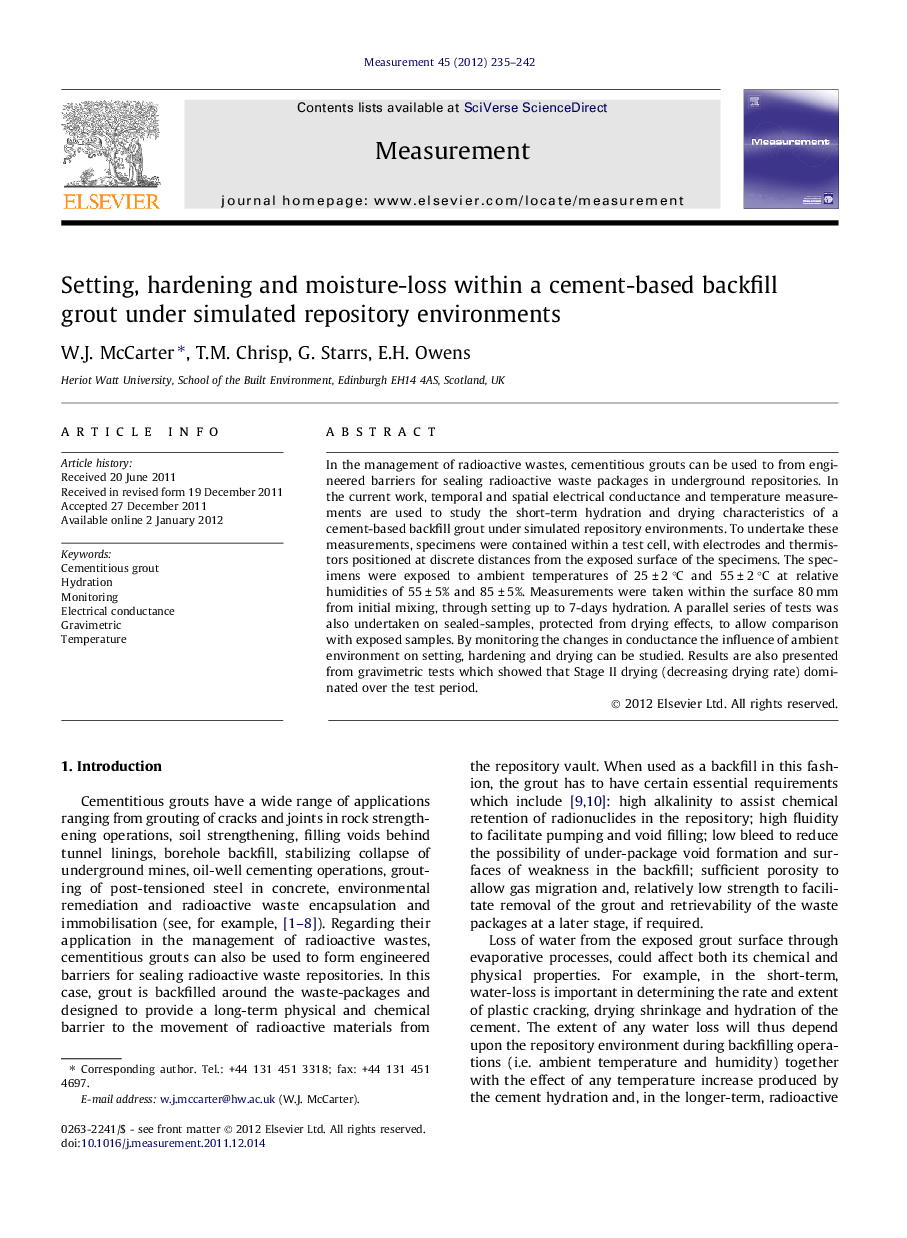| Article ID | Journal | Published Year | Pages | File Type |
|---|---|---|---|---|
| 731497 | Measurement | 2012 | 8 Pages |
In the management of radioactive wastes, cementitious grouts can be used to from engineered barriers for sealing radioactive waste packages in underground repositories. In the current work, temporal and spatial electrical conductance and temperature measurements are used to study the short-term hydration and drying characteristics of a cement-based backfill grout under simulated repository environments. To undertake these measurements, specimens were contained within a test cell, with electrodes and thermistors positioned at discrete distances from the exposed surface of the specimens. The specimens were exposed to ambient temperatures of 25 ± 2 °C and 55 ± 2 °C at relative humidities of 55 ± 5% and 85 ± 5%. Measurements were taken within the surface 80 mm from initial mixing, through setting up to 7-days hydration. A parallel series of tests was also undertaken on sealed-samples, protected from drying effects, to allow comparison with exposed samples. By monitoring the changes in conductance the influence of ambient environment on setting, hardening and drying can be studied. Results are also presented from gravimetric tests which showed that Stage II drying (decreasing drying rate) dominated over the test period.
► The testing methodology is non-destructive. ► Measurements taken in-situ and in real-time. ► Measurement of the temporal and spatial variation in hydration and drying response. ► Allows development of a detailed picture of setting and hardening gradients. ► Bulk gravimetric measurements and drying rates presented.
